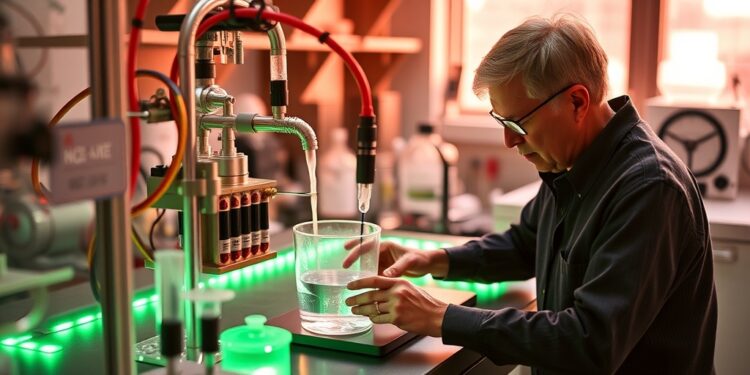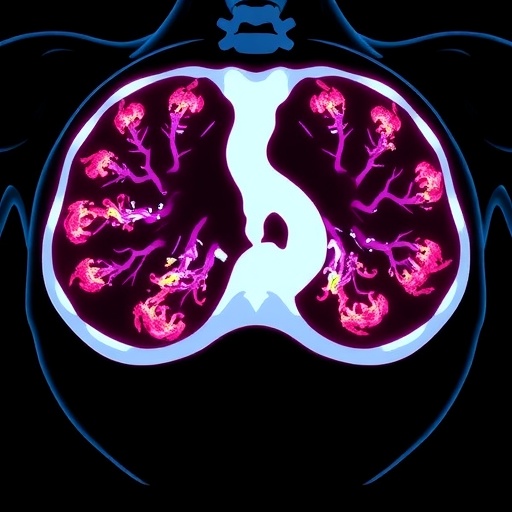
In the intricate realm of cellular biology, the behavior of cells is intricately orchestrated by the dynamics of biomolecular condensates. These unique structures comprised of proteins, nucleic acids, and other molecules display fascinating properties, transitioning from liquid-like droplets to more solid states, akin to oil mixing with vinegar. The ability of biomolecular condensates to shift their phase states quickly enables them to respond effectively to the cellular environment, regulating various biochemical processes. Researchers at Washington University in St. Louis have recently embarked on a journey to unravel the electrochemical properties that underlie these remarkable molecules, revealing new insights into their roles within the cell.
In a groundbreaking study published in the prestigious journal Nature Chemistry, assistant professor Yifan Dai and his colleagues shed light on the electrochemical properties governing intracellular behavior. Their work meticulously examines how these properties influence the movement of molecules and chemical activities within cells, with profound implications for understanding cellular function. The research illuminates not only the behaviors of these condensates but also how their dynamics might deteriorate as they age, potentially impacting critical cell processes and leading to diseases like amyotrophic lateral sclerosis (ALS) and various forms of cancer.
While the movement of ions across cell membranes—known as extracellular flow—has been extensively researched, the electrochemical fields operating inside the cell have remained largely uncharted territory. This oversight highlights a significant gap in our understanding of cellular environments, where the localized electrochemical properties play an equally crucial role. Yifan Dai emphasized this point, noting that, although considerable knowledge exists regarding how extracellular factors influence electrochemical dynamics, our knowledge of intracellular dynamics is still in its infancy.
Dai’s research represents a pioneering investigation aimed at establishing foundational rules for the electrochemical characteristics of biomolecular condensates. Collaborating with esteemed colleagues from Stanford University, including Professors Guosong Hong and Richard N. Zare, this work shows that the condensation of biomolecules and the ensuing non-equilibrium processes are vital for regulating the electrochemical dynamics of the cellular environment. Through this lens, it becomes clear that understanding condensate behavior can provide valuable insights into cellular processes that govern health and disease.
To illustrate these mechanisms, imagine a bustling conference hall where groups of attendees are drawn to various exhibits. The interactions occurring in this space resemble the behaviors of biomolecular condensates as they move in response to chemical signals and electrical potentials. Just like conference attendees adhere to the attractions of the exhibits, condensates can impact one another via the forces of electrostatics and changes in the local pH. This paradigm highlights the dynamic interplay between condensates and underscores how their behaviors can influence cellular outcomes.
However, the research delves even deeper, examining the aging process of these condensates. As time progresses, the interactions and potentials governing condensates evolve, drawing a parallel to individuals in a conference hall whose energy wanes, ultimately leading to less effective interactions. According to Dai, these “aging-associated” properties could play a role in mediating dysfunction at the molecular level, leading to an increased risk of diseases such as Alzheimer’s or ALS. Understanding how to intervene at these critical junctures opens up pathways for novel therapeutic strategies aimed at restoring healthy cellular function.
The study demonstrates that by modifying the surface properties of biomolecular condensates, researchers can influence their electrical potentials. This newfound knowledge enables the possibility of fine-tuning the behavior of condensates to facilitate healthy biological processes. By measuring the alignment of biomolecules and their surface potentials for ion flow, Dai and his team have equipped themselves with tools to manipulate these signals in ways that could yield beneficial biological reactions.
Emerging from this research is a revolutionary perspective that shifts the understanding of biomolecular condensates—showcasing them not merely as passive participants in cellular processes but as active regulators capable of dynamically influencing their own environments. This paradigm shift signifies that interventions designed to target these non-equilibrium phases can truly change the electrochemical landscape within cells, thereby paving the way for innovative treatments to combat serious medical conditions.
The team’s findings highlight the need for a nuanced view of cellular dynamics, particularly concerning how biomolecular condensates can facilitate cellular decision-making. By delving into the intricate interplay of molecular and electrochemical forces, researchers inch closer to understanding the broader implications of these processes for cellular physiology and the pathology of diseases. The findings, although still in their early stages, promise to provide an essential foundation for further exploration of the role of biomolecular condensates in health and illness.
As the research community continues to unveil the secrets of intracellular dynamics, the role of biomolecular condensates is seemingly just beginning to capture the attention it rightly deserves. By understanding these complex structures, scientists can better comprehend how they impact cellular behavior and decide upon therapeutic approaches for a range of diseases. The implications of this research are vast, offering hope that targeting the aging processes of condensates could lead to strategies that minimize the risk of neurodegeneration and other disorders.
In conclusion, the electrochemical behavior of biomolecular condensates is a burgeoning field with significant implications for understanding cellular physiology. The ability to manipulate these properties through controlled interventions could unlock novel therapeutic approaches for serious diseases, encouraging researchers to delve deeper into this intricate dance of biomolecules within the cell. The future of cellular biology may very well hinge on harnessing the potential of biomolecular condensates as not just passive participants but as active players steering the course of cellular life.
Subject of Research: Electrochemical properties of biomolecular condensates and their impact on cellular processes.
Article Title: Aging Dynamics of Biomolecular Condensates Reveal New Pathways for Disease Treatment
News Publication Date: October 23, 2023
Web References: Nature Chemistry
References: Yu W, Guo X, Xia Y, Ma Y, Tong Z, Yang L, Song X, Zare RN, Hong G, Dai Y. Aging-dependent evolving electrochemical potentials of biomolecular condensates regulate their physicochemical activities. Nature Chemistry. online March 12, 2025.
Image Credits: Washington University in St. Louis
Keywords: biomolecular condensates, electrochemical properties, cell behavior, aging processes, ALS, Alzheimer’s, cancer research, cellular physiology, therapeutic strategies, molecular interactions, intracellular dynamics, phase transitions.
Tags: amyotrophic lateral sclerosis studybiochemical processes in cellsbiomolecular condensatescancer research and biomolecular structurescellular dynamics and regulationelectrochemical properties of cellsimplications for disease mechanismsNature Chemistry publicationphase transitions in cellular biologyprotein and nucleic acid interactionsresearch on condensate agingWashington University research efforts





